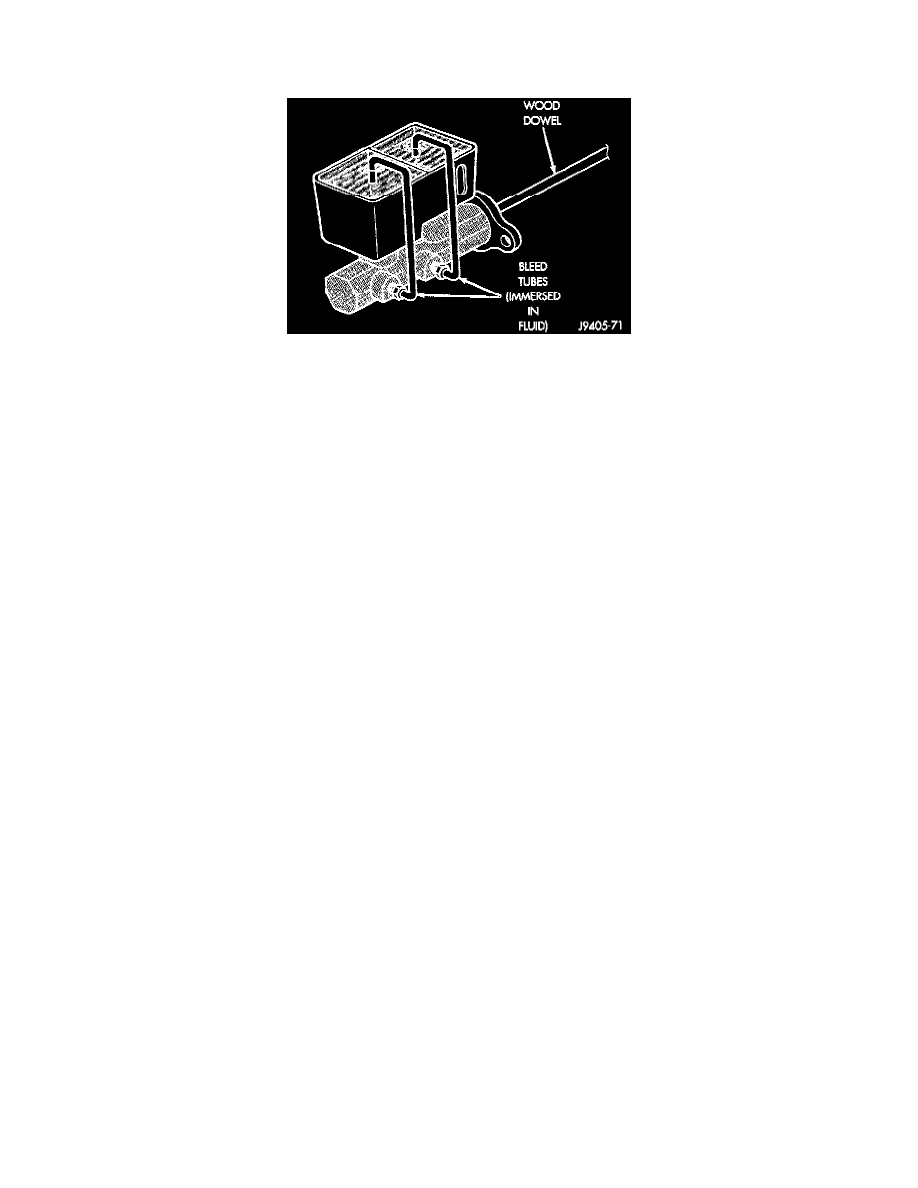RAM 1500 Truck 2WD V8-5.2L VIN Y (1997)

Brake Master Cylinder: Service and Repair
Master Cylinder Bleeding
Master Cylinder Bleeding
PROCEDURE
An overhauled, or new master cylinder should always be bled before installation in the vehicle. This practice saves time during brake bleeding
because air in the cylinder will not be pumped into the lines. The only tools needed for bench bleeding are a vise, a pair of bleed tubes, and a
length of wood dowel. Bleed tubes can either be purchased or fabricated from spare brake lines and fittings.
1. Mount master cylinder in vise. Clamp vise jaws on one of the cylinder mounting ears.
2. Install bleed tubes in cylinder outlet ports and direct tube ends into appropriate reservoir chambers.
3. Fill reservoir chambers about 3/4 full with fresh, clean brake fluid.
4. Bleed cylinder by stroking cylinder pistons inward then allowing them to return under spring pressure. Use a wood dowel, or similar tool to
stroke pistons.
5. Continue stroking pistons until bubbles no longer appear in fluid entering reservoir.
6. Remove bleed tubes and install plastic plugs in cylinder outlet ports. Plugs will prevent fluid loss and keep dirt out until cylinder assembly is
ready for installation.
7. Top off reservoir fluid level and install cover and seal.
CAUTION: Be sure the seal is properly positioned on the reservoir cover. The seal can shift out of position during installation if care is not
exercised. This will result in leakage and possible fluid contamination.
